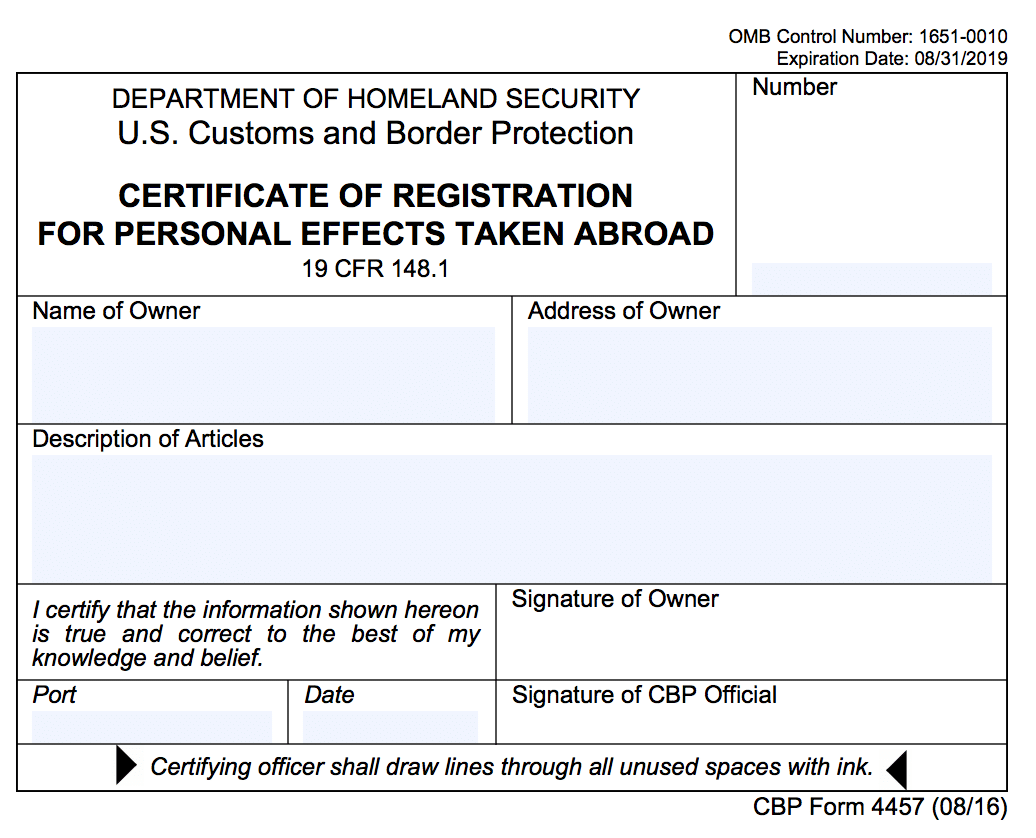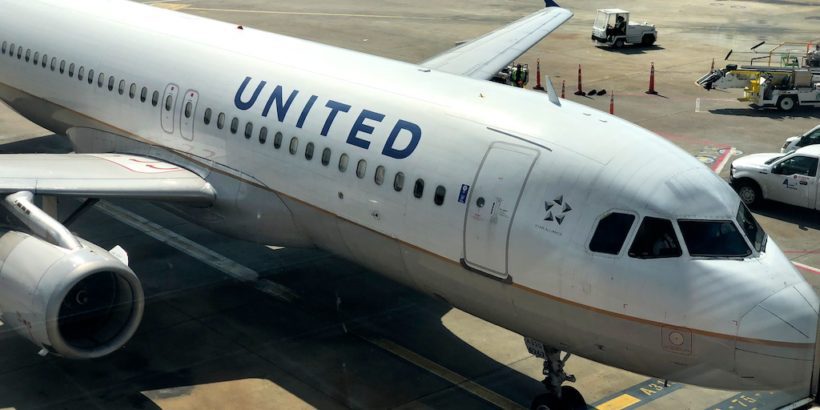Are you thinking about bringing your guns/firearms and/or ammunition through the airport and on to your next destination? If so, there are some specific TSA rules related to traveling with guns that you need to know about before you ever set foot in an airport. In this article, I break down all the rules for TSA approved gun cases and also provide you with links to all of the firearm policies for the major US airlines.
Table of Contents
Can you bring firearms through the airport?
Yes, you may transport unloaded firearms in a locked hard-sided container but as checked baggage only. Some of the things to keep in mind are that the guns need to be unloaded and the container needs to:
- Have a lock
- Be hard-sided
- Transported with checked baggage
Keep reading below for more details on the rules.
Tip: Use the free app WalletFlo to help you travel the world for free by finding the best travel credit cards and promotions!

Firearm transport restrictions: 8 things to know
1. State and local laws
When traveling to and from the airport, remember to comply with the laws concerning possession of firearms since these can differ a lot, depending on the city, state, etc. For a list of relevant laws pertaining to traveling with guns in every state click here.
2. What is a “firearm?”
It’s a good idea to check with your airline to see what exactly is considered a firearm if you are on the fence. For example, here’s the definition of firearm provided by Alaska Airlines:
A “firearm” is any weapon that will, or is designed to, or may be readily converted to expel a projectile by the action of an explosive, or the frame or receiver of any such weapon. This includes:
- Sporting rifles, shotguns, and handguns
- Handguns of authorized law enforcement officers while traveling on official duty
- Starter pistols, compressed air or BB guns, and flare pistols
- Antique firearms
- Silencers/suppressors
Notice that even BB guns fall under this category. If you have a paintball gun they might not be subject to the container requirements. For example, Southwest states that “[p]aintball guns are allowed in checked baggage and are not subject to the container requirements of firearms.” Just check with your airline if you are in doubt.
Relate: Can You Bring Pepper Spray on a Plane?
3. International travel with firearms
If you are traveling internationally with a firearm in checked baggage, you should check with the U.S. Customs and Border Protection website for information and requirements prior to travel.
Here’s what the CBP states:
Current export regulations issued by the Department of State require travelers to file Electronic Export Information (EEI) for temporary export of personally owned firearms via the Automated Export System (AES) prior to departure from the United States.
You will likely need to complete a CBP Form 4457. Once the CBP 4457 is completed, it can be used over and over again for the same firearm. You also want to get familiar with the import requirements of the foreign country(s) (the CBP Form 4457 may be required for entry). For more on international firearm travel regulations click here.

4. Firearm must be unloaded
When you are traveling with your firearm through an airport, it must be unloaded. 49 CFR 1540.5 defines what a loaded firearm is and states that:
Loaded firearm means a firearm that has a live round of ammunition, or any component thereof, in the chamber or cylinder or in a magazine inserted in the firearm.
Some also recommend locking the slide back to show that the gun is not loaded. But just make sure that the gun is not loaded or you could face some harsh consequences like getting fined or even criminal consequences.
5. Choosing a container and lock
Firearms must be unloaded and locked in a hard-sided container and transported as checked baggage only. Sometimes multiple locks may be required or used to secure the baggage. (You are usually NOT required to place locks in every available hole on the case, as long as the case is secure.)
Only the passenger should retain the key or the combination to the firearm lock. The exception to this is if TSA personnel request the key to open the firearm pursuant to TSA regulations for inspection. This means that you need to be on alert as you make your way through the terminals just in case your are paged by airport agents that they need to inspect your container after you have checked it.
You may use any brand or type of lock to secure your firearm case. I would not go with a container that has a “TSA approved” lock on it (the type of lock that TSA agents can open up), since you want to avoid as much potential tampering with your firearm as possible.
Here are some links to TSA compliant firearm containers, many of which are on the cheaper side. Keep in mind that you don’t have to use a “firearm” case. Any hard-sided case that can be securely locked will suffice, even if it’s not specifically designed for firearms.
Related: TSA Approved Locks Guide (Worth It?)
Amazon
- Daoe NWT110 Lockable Hard Pistol Gun Case with Pluckable Foam
- SnapSafe Treklite Gun Safe Lock Box with TSA Combination Lock
- Pelican 1170 Case With Foam
Walmart
Academy
Bass Pro Shops
6. Declaring your firearm (checking-in)
Once you arrive at the airport you need to declare the firearm and/or ammunition to the airline when checking your bag at the ticket counter (you can’t check your firearm at the curb). This process could take some extra time to complete so you don’t want to be rushing through the airport when you’re traveling with a firearm — give yourself a little bit of extra time.
You’ll have to read and sign a tag ensuring that you are complying with all the firearm regulations and then insert that tag into your firearms bag. The TSA inspection will take place at the check-in counter or may take place at another TSA area.
The container that you choose to use must completely secure the firearm from being accessed. If the locked case can be easily opened it will not be permitted. You should note that the container the firearm was in when purchased may not adequately secure the firearm when it is transported in checked baggage.
Declare each firearm each time you present it for transport as checked baggage. Ask your airline about limitations or fees that may apply. You can read the policies for each major US carrier below:
- Alaska Airlines
- American Airlines
- Delta Airlines
- Frontier Airlines
- Hawaiian Airlines
- JetBlue
- Southwest Airlines
- Spirit Airlines
- United Airlines
I would recommend for you to print out/download the policy for the airline that you’re flying with to ensure that the process runs smoothly. Sometimes airline agents don’t know their own policies and will assume how things should work and you’ll have to check them which is easy to do when you have their policy on you.
Tip: Use WalletFlo for all your credit card needs. It’s free and will help you optimize your rewards and savings!
7. Firearm parts
Firearm parts cannot be transported in your carry-on bags. So things like magazines, clips, bolts, and firing pins, must be transported in checked baggage. Also, replica firearms (even toys) must be transported in checked baggage only. However, rifle scopes are permitted in carry-on and checked baggage.
8. Ammunition
Ammunition is prohibited in carry-on baggage, but small arms ammunition may be transported in checked baggage when being transported securely for personal use according to 49 CFR 175.10 (a)(8).
Small arms ammunition includes cartridges up to 19.1 mm (.75 caliber) and shotgun shells of any gauge. (It does not include black powder, smokeless powder, primers, percussion caps, or homemade powder and ball loads for muzzle loading.)
Firearm magazines and ammunition clips, whether loaded or empty, must be securely boxed or included within a hard-sided case containing an unloaded firearm.
You can store your small arms ammunition in the same hard-sided case as the firearm or in a secured box made up of certain materials. TSA states that, small arms ammunition “must be packaged in a fiber (such as cardboard), wood, plastic, or metal box specifically designed to carry ammunition.”
The federal regulation that speaks on this is 49 CFR 175.10 (a)(8) and it states:
(8) Small arms ammunition for personal use carried by a crewmember or passenger in checked baggage only, if securely packed in boxes or other packagings specifically designed to carry small amounts of ammunition. Ammunition clips and magazines must also be securely boxed. This paragraph does not apply to persons traveling under the provisions of 49 CFR 1544.219.
Also, you should check with your airline if ammunition is allowed in checked bags.
Related: Does TSA Check For Arrest Warrants?
The risk of getting fined by TSA
TSA can fine passengers for violating certain rules and the fines for failing to abide by the transport rules for firearms are some of the biggest penalties.
So make sure that you properly package your firearm and that it is not loaded when you arrive at the airport because that is one of the major violations.
And also, always triple check that your firearm is not in your carry-on bag because taking a firearm through airport security, especially if you have access to ammunition, could result of a hefty fine (along with referral to law-enforcement).
Firearms through the airport FAQ
Typically a firearm will include:
Sporting rifles, shotguns, and handguns
Handguns of authorized law enforcement officers while traveling on official duty
Starter pistols, compressed air or BB guns, and flare pistols
Antique firearms
Silencers/suppressors
If you have any questions, be sure to check with the airline you are flying with.
You may be able to bring your firearm on international flights in your checked baggage. However, you may have to fill out extra paperwork including a CBP Form 4457.
When traveling through an airport with your firearm, it must be unloaded or you might be subjected to a large fine and/or face criminal consequences.
No, you are not allowed to bring ammunition in your carry-on.
Final word
The rules aren’t that complex when it comes to traveling with firearms through airports. The key is to make sure you get a TSA-compliant case that has a hard shell and comes with a key lock or combination lock. Also, it’s very key to remember to unload the weapon before storing it. And if you’re planning on traveling internationally, you should do some research on the regulations in the country you’ll be arriving in.
Daniel Gillaspia is the Founder of UponArriving.com and the credit card app, WalletFlo. He is a former attorney turned travel expert covering destinations along with TSA, airline, and hotel policies. Since 2014, his content has been featured in publications such as National Geographic, Smithsonian Magazine, and CNBC. Read my bio.


It’s good to know that a hard-sided container should be with the checked baggage when flying. My brother needs to get a new case and foam inserts for when he travels with his guns. He should find the best protection so his gun doesn’t get damaged.
Do GLOCK factory cases qualify as TSA approved?
Does the suitcase containing the locked gun case also be locked?
Nope, just the gun case.
Thank you, very informative